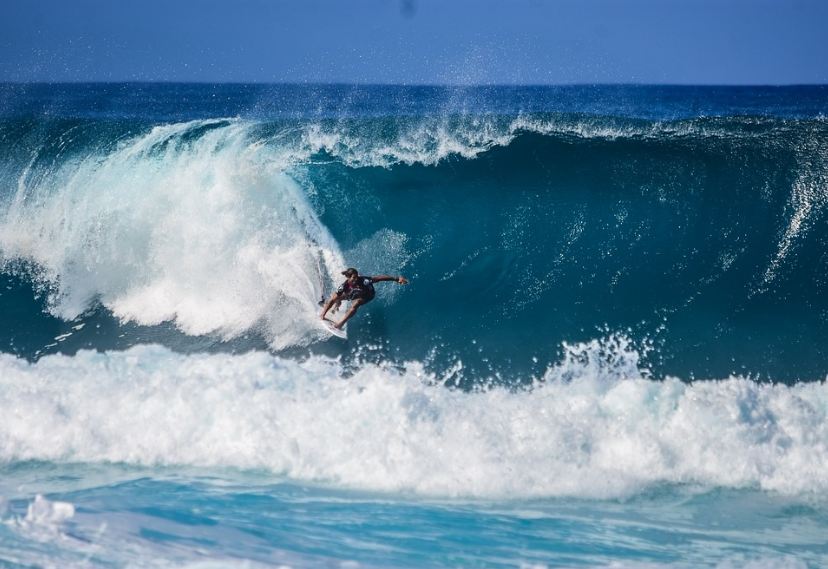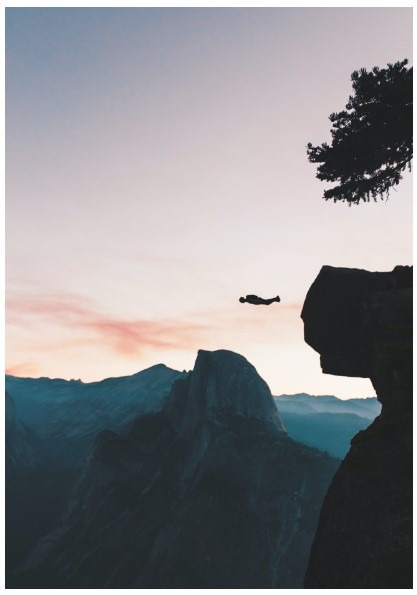What Is Noboarding?
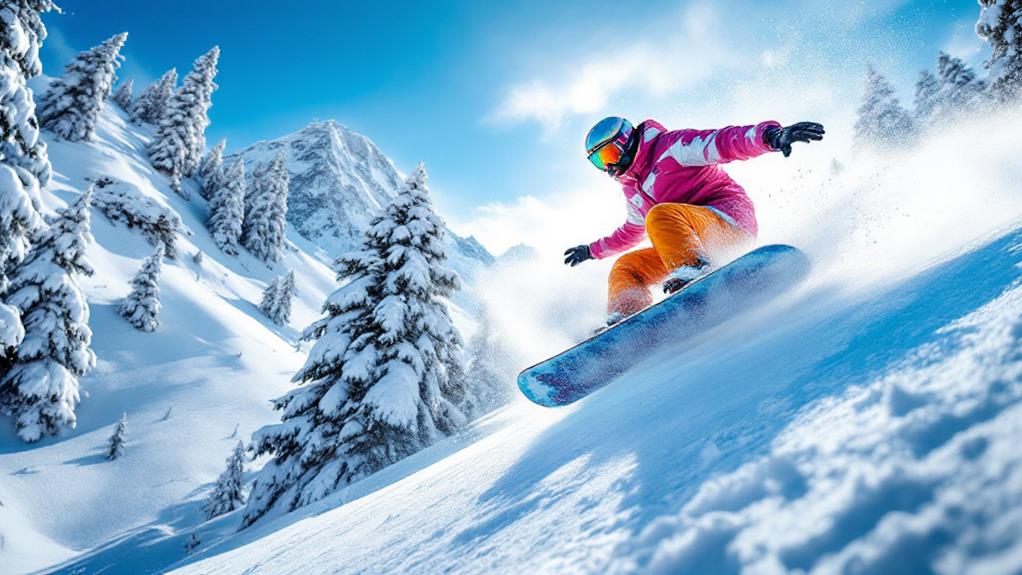
Noboarding is an exhilarating variation of snowboarding that emerged in the early 2000s. You'll ride a board without bindings, relying solely on balance and body control to navigate the slopes. It's inspired by surfing and offers a more intimate connection with the snow. You'll need a specialized noboard, a leash, and protective gear. The technique involves using your feet and body weight to steer and control the board. While it presents unique challenges, noboarding can enhance your overall snowboarding skills and provide a thrilling new experience. If you're ready for an adventure that pushes the boundaries of traditional snowboarding, there's much more to discover about this exciting sport.
Origins of Noboarding
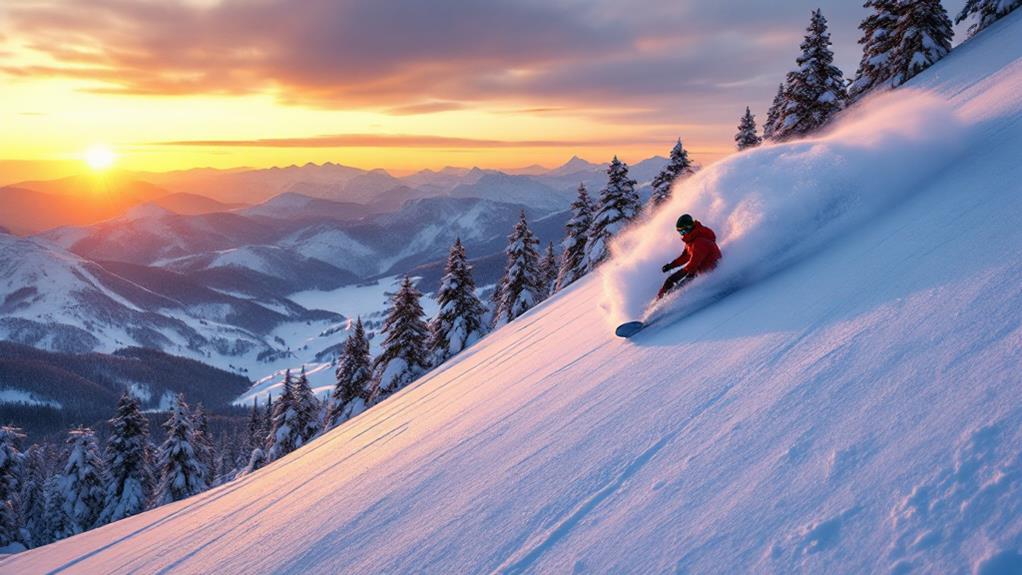
In the early 2000s, a group of snowboarding enthusiasts began experimenting with riding their boards without bindings. This unconventional approach to snowboarding quickly gained traction among riders seeking a new challenge and a closer connection to the mountain. The humble beginnings of snowboarding's evolution can be traced back to the surfing-inspired origins of the sport, as riders sought to replicate the fluid, free-flowing style of surfing on snow.
You'll find that noboarding's roots can be traced back to the surfing-inspired origins of snowboarding itself. By removing bindings, riders aimed to replicate the fluid, free-flowing style of surfing on snow. The concept gained momentum in British Columbia, Canada, where deep powder conditions provided the ideal environment for this binding-free riding style.
As word spread, more snowboarders began modifying their equipment to accommodate noboarding. They'd remove bindings and experiment with various traction pads and leashes to maintain control without being attached to the board. This DIY approach fostered a tight-knit community of innovators and risk-takers.
Noboarding's popularity grew through word-of-mouth and early internet forums, where riders shared their experiences and techniques. By the mid-2000s, small manufacturers began producing specialized noboards, legitimizing the sport and paving the way for its continued growth and evolution.
Equipment Needed
For noboarding, you'll need minimal equipment compared to traditional snowboarding. The most crucial item is a noboard, which is essentially a small, binding-free snowboard. It's typically shorter and wider than a regular snowboard, providing better float in powder snow. You'll also need a leash to keep the board attached to you when you're not riding it.
Your choice of footwear is important. Many noboarders opt for snowboard boots with excellent traction, as they offer good support and control. However, some prefer the flexibility of regular snow boots. Whichever you choose, make sure they're comfortable and provide adequate grip on the board's surface.
Protective gear is essential. You'll want a helmet to safeguard your head, as well as wrist guards, knee pads, and elbow pads. These will help protect you from falls, which are common when learning noboarding. Comfort should be a priority for longer periods of use.
Don't forget warm, waterproof clothing. Layer up with moisture-wicking base layers, insulating mid-layers, and a waterproof outer shell. Gloves or mittens are crucial to keep your hands warm and dry.
Lastly, consider bringing a backpack to carry extra gear, water, and snacks for your noboarding adventures.
Technique Basics
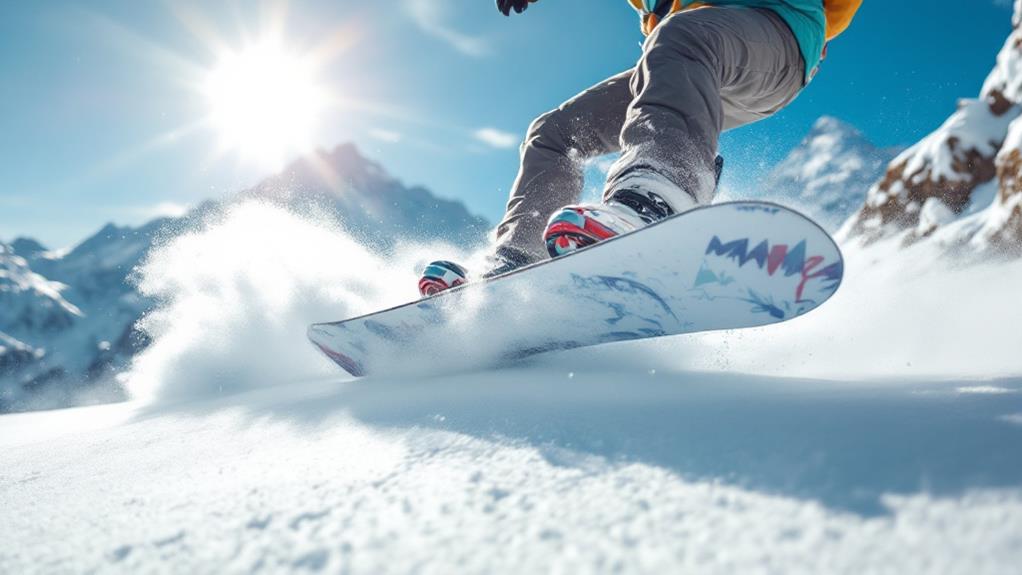
With your equipment ready, let's focus on the fundamental techniques of noboarding. Start by securing your feet to the board using the noboard straps or bindings. Position your feet shoulder-width apart, with your dominant foot at the back of the board.
To begin riding, find a gentle slope and place the board perpendicular to the fall line. Lean forward slightly and use your front foot to guide the board downhill. As you gain speed, shift your weight to your back foot for better control. Keep your knees bent and your arms relaxed for balance.
To turn, apply pressure to your toes or heels, depending on the direction you want to go. For a toe-side turn, press down with your toes and lean forward. For a heel-side turn, press down with your heels and lean back slightly. Practice linking these turns to create smooth S-shaped patterns as you descend.
Remember to keep your upper body aligned with the board and use your core muscles for stability. As you become more comfortable, experiment with different body positions and weight distributions to fine-tune your technique and style.
Safety Considerations
While noboarding can be exhilarating, it's crucial to prioritize safety. Always wear appropriate protective gear, including a helmet, goggles, and padded clothing. Familiarize yourself with the terrain and snow conditions before attempting any runs. Start on gentle slopes and gradually progress to more challenging terrain as your skills improve.
Be aware of your surroundings and other people on the mountain. Maintain a safe distance from trees, rocks, and other obstacles. Never noboard alone; always have a companion who can assist in case of an emergency. Carry a fully charged cell phone and basic first aid supplies.
Know your limits and don't attempt maneuvers beyond your skill level. Stay within designated areas and respect all posted signs and warnings. Be prepared for changing weather conditions and dress accordingly. Hydrate properly and take regular breaks to avoid fatigue.
Learn proper falling techniques to minimize the risk of injury. Practice controlled stops and turns before attempting more advanced moves. If you're unsure about any aspect of noboarding, consider taking lessons from a qualified instructor to ensure you're using proper techniques and following safety protocols.
Advantages Over Traditional Snowboarding
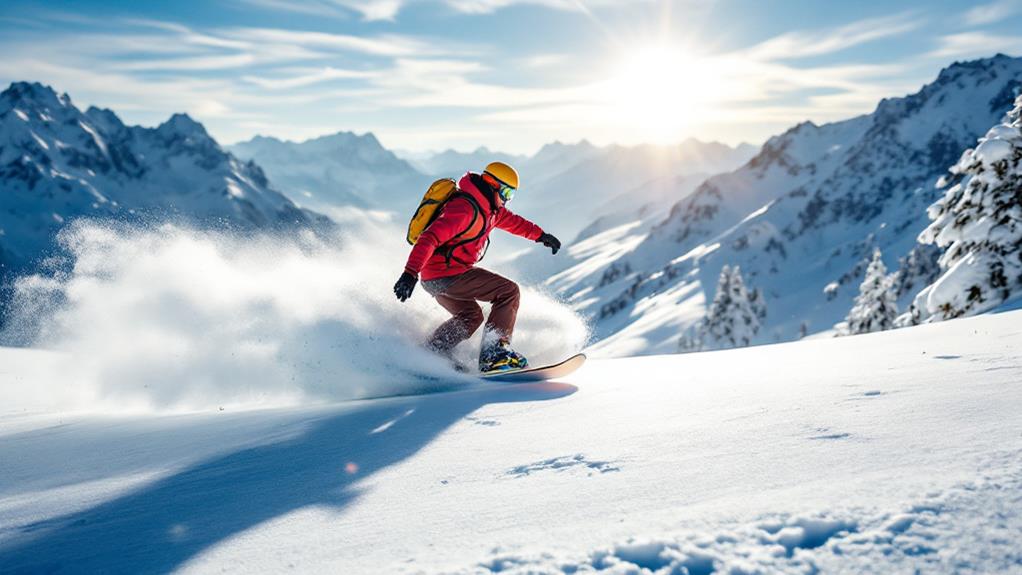
Offering a unique and liberating experience, noboarding presents several advantages over traditional snowboarding. You'll find that noboarding allows for a more intimate connection with the snow, as you're not bound to a board with bindings. This freedom enables you to make quicker, more instinctive movements and adjustments as you descend the slopes.
Noboarding also offers a more challenging and engaging ride, forcing you to rely on your balance and body control rather than equipment. This can lead to improved overall snowboarding skills and body awareness. You'll also appreciate the lightweight nature of noboarding gear, making it easier to transport and maneuver in deep powder conditions.
Another advantage is the versatility noboarding provides. You can easily switch between noboarding and traditional snowboarding during a single run, giving you the best of both worlds. Additionally, noboarding can be less expensive than traditional snowboarding, as you don't need to invest in expensive bindings or specialized boots. This accessibility makes it an attractive option for those looking to try something new without breaking the bank.
Challenges for Beginners
Beginners face several unique challenges when diving into noboarding. First, you'll need to master the art of balance without the support of bindings. This requires a strong core and leg muscles, as well as heightened body awareness. You'll have to learn how to distribute your weight effectively across the board to maintain control and avoid unexpected falls.
Another hurdle you'll encounter is the need for precise foot placement. Unlike traditional snowboarding, where your feet are secured, noboarding demands constant attention to foot positioning. You'll need to develop muscle memory to keep your feet in the optimal spots for steering and stability.
Controlling your speed can also be tricky. Without the ability to easily dig your edges into the snow, you'll need to rely on body positioning and weight distribution to slow down or stop. This can be particularly challenging on steeper terrain or in icy conditions.
Lastly, you'll need to adapt to a different turning technique. Noboarding requires more subtle movements and a greater emphasis on using your entire body to initiate and complete turns. This can feel counterintuitive at first, especially if you're used to traditional snowboarding methods.
Advanced Noboarding Tricks
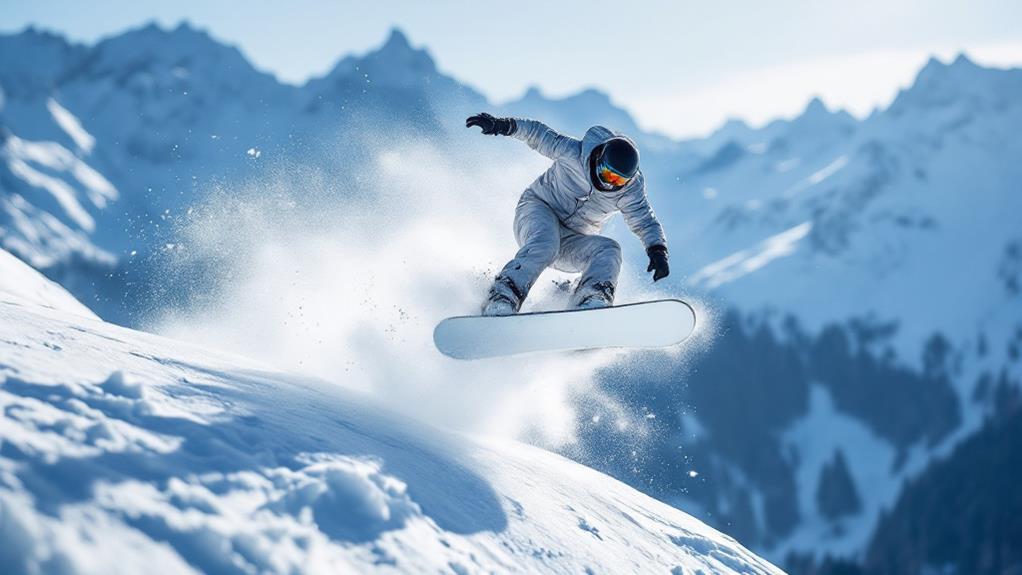
Once you've mastered the basics of noboarding, you can start exploring advanced tricks. These techniques require more skill, balance, and confidence on the snow. You'll need to practice extensively to perfect them, but they'll add excitement and challenge to your noboarding experience.
Some advanced noboarding tricks include:
- Jumps and spins: Launch yourself off natural terrain features or man-made jumps, performing rotations in the air before landing.
- Rail slides: Approach and slide along rails or boxes in terrain parks, maintaining balance without bindings.
- Switch riding: Learn to ride with your non-dominant foot forward, expanding your versatility on the slopes.
To master these tricks, start small and gradually increase difficulty. Always prioritize safety and wear appropriate protective gear. Work on your core strength and flexibility off the slopes to improve your performance. Don't be discouraged by falls; they're part of the learning process. Remember to stay relaxed and fluid in your movements. As you progress, you'll discover that advanced noboarding tricks offer a unique sense of freedom and accomplishment that's hard to match with traditional snowboarding.
Best Terrain for Noboarding
The ideal terrain for noboarding combines specific snow conditions and slope characteristics. You'll want to look for fresh powder snow, which provides the perfect cushion for sliding and carving. Steep slopes are generally better for noboarding, as they allow for greater speed and control.
When choosing your noboarding spot, consider these factors:
| Terrain Type | Difficulty | Best For |
|---|---|---|
| Groomed Runs | Beginner | Learning basics |
| Tree Runs | Intermediate | Tight turns, agility |
| Open Bowls | Advanced | Speed, long carves |
Beginners should start on gentle, groomed slopes to get a feel for the board's movement. As you progress, you can tackle steeper terrain and more challenging features. Tree runs offer excellent opportunities for quick turns and improving your agility, while open bowls allow for high-speed carving and long, sweeping turns.
Avoid icy or hard-packed snow, as it's more challenging to control your board without bindings. Also, steer clear of terrain parks with jumps and rails until you've mastered basic noboarding techniques. Remember, the best terrain for noboarding ultimately depends on your skill level and personal preferences.
Noboarding Communities and Events

Noboarding enthusiasts around the world have formed tight-knit communities and organized events to celebrate this unique winter sport. You'll find local groups in many mountain towns and ski resorts, where riders gather to share tips, explore new terrain, and enjoy the freedom of binding-free snowboarding together.
Social media platforms and online forums have made it easier for noboarders to connect, plan meet-ups, and showcase their adventures. You can join these virtual communities to stay updated on the latest noboarding trends, equipment innovations, and upcoming events.
Several noboarding-specific events have emerged in recent years, ranging from casual gatherings to more structured competitions. These events offer you the opportunity to:
- Test your skills against other noboarders
- Learn from experienced riders and industry experts
- Try out new noboarding equipment and techniques
Some popular noboarding events include the Noboard World Championships in Japan and various grassroots competitions in North America and Europe. By participating in these events, you'll not only improve your noboarding skills but also become part of a growing global community of like-minded winter sports enthusiasts.
Comparing Noboarding to Snowskating
While noboarding and snowskating are both binding-free snow sports, they offer distinct experiences on the mountain. Noboarding involves riding a snowboard without bindings, using a pad for traction, while snowskating uses a skateboard-like deck on top of a ski.
You'll find that noboarding provides a more surf-like feel, allowing you to shift your weight and position freely on the board. It's ideal for powder riding and backcountry exploration. In contrast, snowskating gives you a street skateboarding sensation on snow, with the ability to perform flip tricks and grinds.
The learning curve differs between the two sports. Noboarding can be easier to pick up if you're already familiar with snowboarding, as the fundamentals are similar. Snowskating, however, may require more time to master, especially if you're new to skateboarding.
When it comes to terrain, noboarding excels in deep powder and off-piste areas, while snowskating is better suited for groomed runs, terrain parks, and urban features. Your choice between the two will depend on your riding style, preferred terrain, and the type of experience you're seeking on the slopes.


